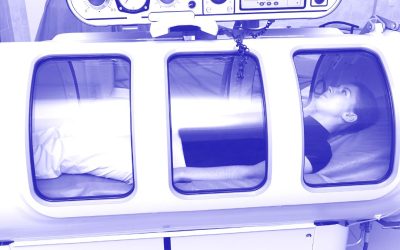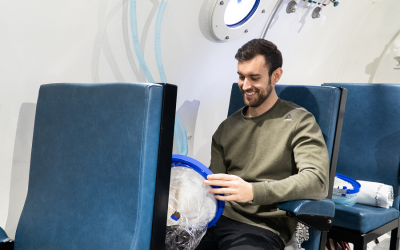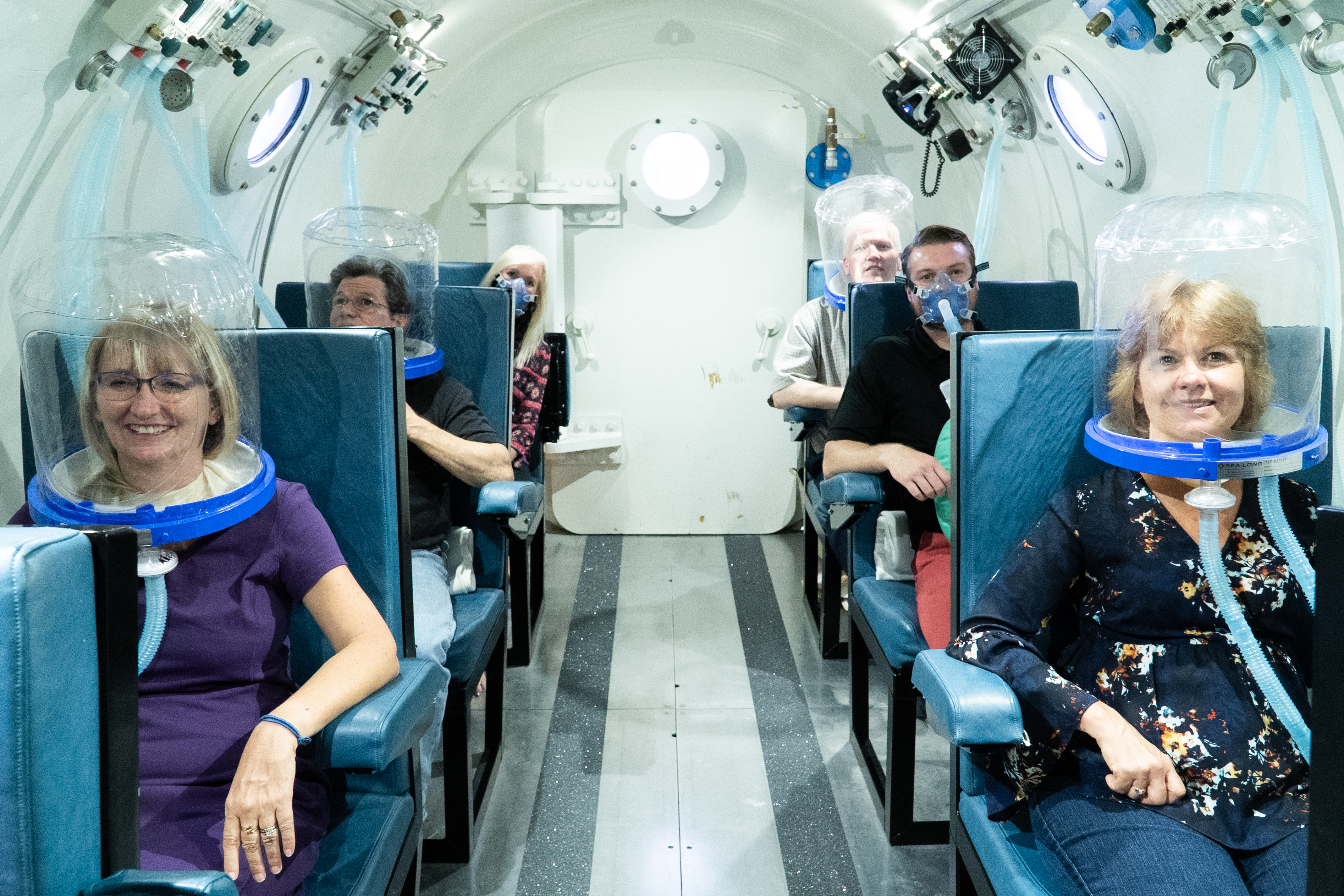This week, researchers also delivered their findings on the use of hyperbaric oxygen therapy as a treatment for Crohn’s disease. “Hyperbaric oxygen therapy (HBOT) delivers 100 percent oxygen in a pressurized chamber, increasing tissue oxygen levels and regulating...
Hyperbaric oxygen therapy for chronic antibiotic-refractory ischemic pouchitis.
Hyperbaric oxygen therapy (HBOT) has been shown to be efficacious in treating various conditions, including perianal Crohn’s disease. Here we present a case of a 59-year-old male with a history of ulcerative colitis, who underwent a total proctocolectomy and two-stage J-pouch construction. He later developed chronic antibiotic-refractory pouchitis with endoscopic features of ischemia. At the completion of HOBT-a total of 20 sessions of 100% oxygen at 2.5-3.0 atmospheres absolute for 60-90 minutes per session-a repeat pouchoscopy showed marked improvement of endoscopic mucosal inflammation. HBOT is known to increase tissue oxygenation, reduce tissue hypoxia, alter inflammatory pathways and promote tissue healing.
Enhanced colonic nitric oxide generation and nitric oxide synthase activity in ulcerative colitis and Crohn’s disease
Recent studies have suggested that nitric oxide (NO.), the product of nitric oxide synthase in inflammatory cells, may play a part in tissue injury and inflammation through its oxidative metabolism. In this study the colonic generation of oxides of nitrogen (NOx) and nitric oxide synthase activity was determined in ulcerative colitis and Crohn’s disease. Colonic biopsy specimens were obtained from inflammatory bowel disease patients and from normal controls. Mucosal explants were cultured in vitro for 24 hours and NOx generation was determined. Nitric oxide synthase activity was monitored by the conversion of [3H]-L-arginine to citrulline. Median NOx generation by inflamed colonic mucosa of patients with active ulcerative colitis and Crohn’s colitis was 4.2- and 8.1-fold respectively higher than that by normal human colonic mucosa. In ulcerative colitis and Crohn’s colitis nitric oxide synthase activity was 10.0- and 3.8-fold respectively higher than in normal subjects.
Role of immunosuppressives in special situations: perianal disease and postoperative period.
Complex perianal disease is associated with poor outcome and requires early effective therapy. Corticosteroids are not effective in perianal fistulising Crohn’s disease, and antibiotics, immunosuppressants and anti-TNF therapy are required. It is important to consider combined medical surgical therapy after accurate imaging using an MRI scan of the pelvis. Drainage of any abscess at examination under anaesthesia and seton insertion are important before introduction of immunosuppressants and anti-TNF therapy. Long-term follow up of patients in a single centre reported responders to azathioprine having a reduced risk of perianal surgery (OR = 0.36; 95% CI: 0.27-0.46), but complex perianal fistulising Crohn’s disease generally requires combination therapy with anti-TNF and azathioprine.
Efficacy of hyperbaric oxygen in patients with Crohn’s disease: two case reports.
Crohn’s disease is an inflammatory disease of the gastrointestinal tract, usually involving the ileum, that can lead to debilitating symptoms of abdominal pain, diarrhea and malabsorption during acute exacerbations. Because there is no known cause of the illness, treatment is based upon symptomatology and may ultimately require bowel resection if response to medical therapy is inadequate. Treatment with hyperbaric oxygen has shown promise in the reduction of inflammation associated with acute exacerbations of Crohn’s disease, with alleviation of symptoms and an improvement in quality of life. We present two cases of pediatric patients with exacerbations of Crohn’s disease who underwent cycles of hyperbaric oxygen therapy.
[Hyperbaric oxygen in the treatment of perineal Crohn’s disease era of infliximab: a renewal interest?].
Despite the growing number of therapeutic methods and the recent introduction of new drugs more active in the therapeutic arsenal, lesions of the ano-perineal Crohn’s disease remains difficult to support. Hyperbaric oxygen (HBO) was made before the era of infliximab, an interesting therapeutic approach in which the current position remains unclear. To assess HBO efficacy in the treatment of anal fistulas refractory Crohn’s disease. Literature review. Hyperbaric oxygen therapy was used in the 90’s when the biotherapy was not part of the armamentarium for Crohn’s disease. Research conducted has identified only nine publications evaluating the efficacy of hyperbaric oxygen therapy in the treatment of anal fistulas refractory Crohn’s disease.
HBOT for inflammatory bowel disease
Traditionally, hyperbaric oxygen treatment (HBOT) has been used to treat a limited repertoire of disease, including decompression sickness and healing of problem wounds. However, some investigators have used HBOT to treat inflammatory bowel disease (IBD), including Crohn’s disease and ulcerative colitis.
Comprehensive searches were conducted in 8 scientific databases through 2011 to identify publications using HBOT in IBD. Human studies and animal models were collated separately.
Hyperbaric oxygen stimulates vasculogenic stem cell growth and differentiation in vivo
We hypothesized that oxidative stress from hyperbaric oxygen (HBO2, 2.8 ATA for 90 min daily) exerts a trophic effect on vasculogenic stem cells.
The efficacy of hyperbaric oxygen (HBO2) for healing refractory wounds in diabetic patients and those with radiation injuries has been shown in randomized trials, and its utilization is supported by independent evidence-based reviews (6, 10, 20, 32, 38). Mechanisms of action for HBO2 are not clear. The goal of this study was to examine the impact of HBO2 on vasculogenic stem cells in an in vivo animal model.
Expanded adipose-derived stem cells for the treatment of complex perianal fistula including Crohn’s disease
In patients without Crohn’s disease, surgery is the mainstay treatment but faecal incontinence and recurrence are high. Infliximab is used in Crohn’s patients but not all respond to therapy. Objective: After an evaluation of the current treatment options, we discuss studies of adipose-derived stem cell (ASC) therapy, a novel approach for treating complex perianal fistulas.
Methods: ASCs are obtained from a liposuction procedure and a subsequent expansion process. They are administered according to a strict protocol which involves infusion of the cells into the target lesion along with fibrin glue.
Exposure to increased pressure or hyperbaric oxygen suppresses interferon-gamma secretion in whole blood cultures of healthy humans.
This study examines the effects of hyperoxia, increased atmospheric pressure, and hyperbaric oxygen on cytokine synthesis.
Five healthy volunteers were exposed to 90 min of room air, 100% oxygen, 10.5% oxygen at 2 atm abs, or 100% oxygen at 2 atm abs (HBO2). All subjects were blinded and randomly exposed to each of the 4 conditions.
Immediately before entering the chamber, immediately after exposure, and 3 and 24 h later, blood was drawn and stimulated ex vivo with phorbol myristate acetate (PMA) and phytohemagglutinin A (PHA).





